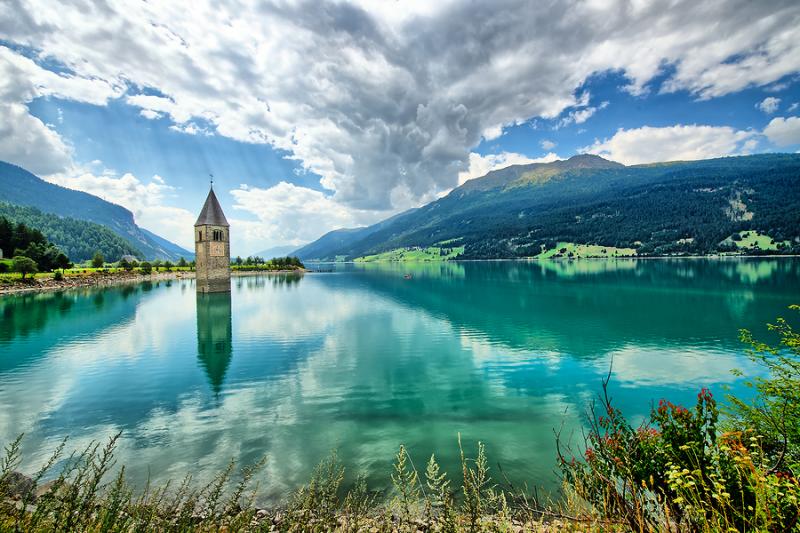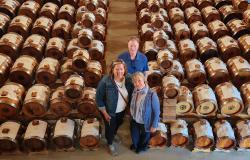You may be familiar with the photo of a submerged church steeple arising in the middle of a blue alpine lake. It looks very picturesque, but the story behind it is a story of displacement.
The lake in question is Lake Resia, located in South Tyrol, near the border with Austria and Switzerland, just two km south of the Resia Pass in the beautiful Venosta Valley. It is the largest lake in the province.
The history of Lake Resia and its bell tower dates back to the 1950s, when, five years after the end of the Second World War, construction of a large dam for the production of hydroelectric energy was completed, uniting two of three natural basins at the Resia Pass: Lake Resia and Lake Curon.
The water swallowed forever the old town of Curon Venosta and part of the town of Resia, which today rests at 22 meters deep. Despite protests, its residents were forced to abandon their homes, jobs and everything they had. They moved nearby, founding a new Curon Venosta.
Still standing as a reminder of this event is the bell tower of the romanesque Church of Santa Caterina d'Alessandria, dating back to 1357, the only building to survive the explosion that demolished about 160 buildings.
Legend has it that, on winter nights, when the lake freezes and the bell tower can be reached on foot, the bells can still be heard (the bells were actually removed before the creation of the artificial basin).
Today, Curon Venosta has approximately 2,450 inhabitants. The lake with its bell tower has become a popular tourist destination. The town houses the Alta Val Venosta Museum, which tells the story of Curon and Resia through historical photos and old objects belonging to local farmers.
The area is also popular for an outdoor-inspired vacation, with many opportunities for hiking and biking. It is considered one of the most beautiful places in the Eastern Alps.
The cycling path tracing the ancient Via Claudia Augusta goes all the way to Merano.
A new TV series airing on Netflix is named after the village of Curon, and is set there.





